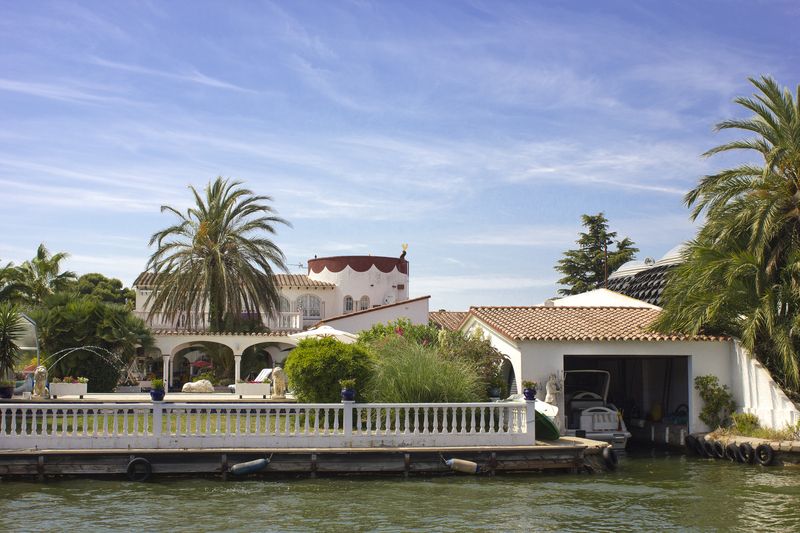
Empuriabrava: Haven for Boating Enthusiasts
2/20/2020
Situated in the heart of the Spanish Costa Brava, Empuriabrava is a large purpose-built coastal resort which forms part of the municipal district of Castelló d'Empúries in the province of Girona. With around 5,000 moorings, Empuriabrava is one of the largest and most impressive residential marinas in the world. It has an extensive network of navigable canals which give unrestricted access to the sea, an enormous sandy beach and a good choice of shops, restaurants and bars. For the boating enthusiast, this truly is paradise. Indeed, it is also an ideal location for all water sport devotees as well as being able to accommodate those who enjoy other outdoor activities such as cycling, golf and horse riding. For the skydiving aficionado, a visit to Skydive Empuriabrava (i) is a must. Established in the 1980's, it has gained the reputation of being one of the leading skydiving centres in the world and it is one of the major training venues for many skydiving teams. The magnificent houses and apartments in Empuriabrava epitomise luxurious living, many of which have their own private mooring and an outdoor swimming pool. These impressive buildings, together with the spectacular moored boats and yachts, are best viewed from the water. Sightseeing tours are available, or you can rent a small boat and explore the waterways yourself. Because it has been in existence for just over 40 years, the town is devoid of historical monuments and buildings. Nevertheless, Empuriabrava's ideal location allows its many visitors easy access to numerous nearby towns and villages with an abundance of sites of historical interest including the Gothic Basilica of Santa Maria and the interesting Museu Cúria-Presó in the neighbouring Castelló d'Empúries. Figueres, the birthplace of Salvador Dali, houses the Teatre-Museu Gala Salvador Dalí and the 18th century military fortress Sant Ferran Castle. The beautiful town of Roses, just a 9km drive, is home to many historical sites: the 16th century Trinity Castle, the Citadel and Bufalaranya Castle. If you are interested in ancient history, the Ruins of Empúries, just half an hour's drive from Empuriabrava, is definitely the place to visit. Whether you wish to reside permanently in Empuriabrava, purchase a second home, or you are a visitor looking for short-term or holiday accommodation, comprehensive details of all properties available for purchase and rental, together with a selection of land for sale, can be found on our website ImmoVario.com. Further reading: Castelló d'Empúries:- Basilica of Santa Maria in Castelló d'Empúries Museu Cúria-Presó (Curia-Prison Museum) Roses:- Roses Tourism Citadel of Roses Bufalaranya Castle Figueres :- Teatre-Museu Gala Salvador Dalí Sant Ferran Castle Ruins of Empúries References and acknowledgements: (i) Skydive Empuriabrava
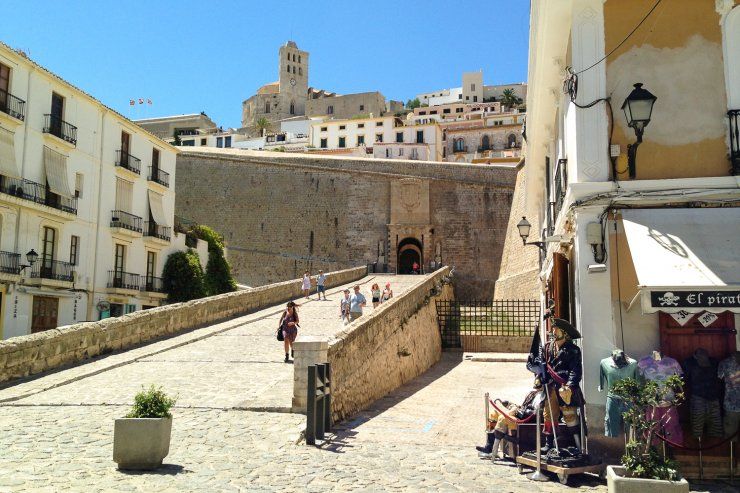
The charms of Ibiza Town
1/21/2020
Ibiza often conjures up images of non-stop partying, sunset beach sessions and hedonistic clubs, but those who choose a house in this sun-kissed white isle know that there is much more to the island than first meets the eye. Its calmer side is yours to discover. Ibiza Town has a raft of places to go and is easily accessible from across the island. It is divided into three sections; Dalt Vila, the New Town and the Marina. Dalt Vila Dalt Vila, as it is known in Catalan, is the older part of town. Founded over 2,500 years ago by the Phoenicians, there are still traces of the cultures who have lived there since, from Phoenician to Carthaginian, Moorish, Roman and of course, Spanish. Plaza de la Constitución, the entrance to the Dalt Vila, has a food and plant market which has been held daily in Mercat Vell since 1873. You can stop for a coffee afterwards in the many cafés which line the market. The Ibizan Contemporary Art Museum (Museu d’Art Contemporani d’Eivissa) is found here and is free to enter. We recommend a visit to the Bastion Santa Lucia for great views of the harbour and Bastion Sant Joan for views of Formentera island. New Town The New Town is flatter and as the name suggests, is where the more modern town centre can be found. It's here that you will find international shops and more upmarket bars and restaurants. One of the main squares is Vara de Rey, where houses built at the start of the 20th century can be found. The Plaza del Parque, also found here, is perfect to while away some time in the sun or to enjoy a chilled drink with the locals. It was pedestrianised in 2017 making it an even more pleasant experience than in the past! The Marina The celebrity spotting part of the town, Ibiza Town's two marinas, Marina Botafoch and Ibiza Nueva, are awash with beautiful yachts and the rich and famous, especially in summer when they moor up here to enjoy the sunshine and party lifestyle of the town. If you want to enjoy a spot of beach time in this part of town, Talamanca beach, a short walk from Marina Botafoch is the place to be. It's refreshingly quiet here and you can head back to Ibiza town by ferry from the beach resort's marina. Contact our partners on Ibiza via our easy to complete form to ask them for more information about properties for sale in Ibiza. Sources Telegraph.co.uk Ibiza-spotlight.com
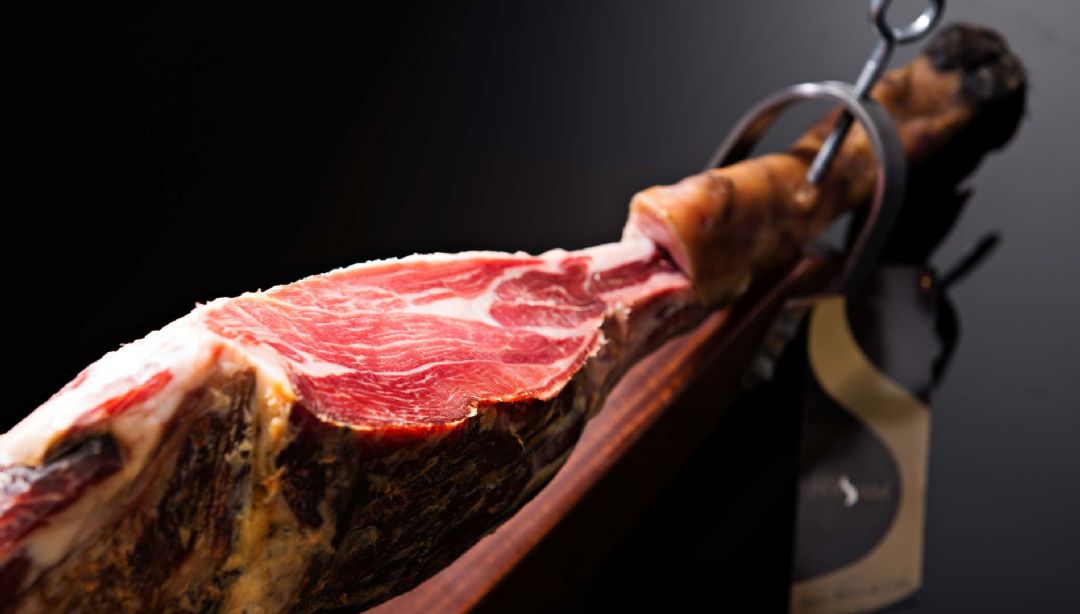
A taste of Spain in your own home: Jamón Ibérico
12/10/2019
Jamón Ibérico is a type of cured ham produced in Spain where it is a protected Denominación de Origen in some regions. In regions where it does not fall under DO regulation it is still a premium, highly prized food, recognised as an essential part of the tapestry of colours and flavours that makes up a Mediterranean table. Also known as pata negra (black hoof), jamón ibérico is produced from piglets reared in the west and south of Spain. Protected denominaciones de origen include Huelva and Córdoba, both in Andalucía, within driving distance from many of our homes on the Costa de la Luz. The piglets are fed a special diet based primarily on acorns, olives and barley. There are three principal types of jamón ibérico and these are labelled according to the pigs’ diet. They also reflect the quality of the ham. Jamón ibérico de bellota is produced from pigs who only eat acorns (bellotas) in the oak forests on the border between Spain and Portugal. These forests are called dehesas, a reference that is often found in premium Spanish restaurants around the world. Bellota ham is cured for 36 months. Jamón ibérico cebo de campo comes from pigs which are reared in pasture on a diet of acorns and grain. This is cured for a minimum of 24 months. Finally, jamón ibérico de cebo also known as jamón ibérico is from grain fed pigs and cured for 24 months. Jamón ibérico is a premium delicacy, often served as an aperitif or with tapas. Stored on a jamonera in a restaurant or even in people’s homes, it is juicy with fragrant aromas and is often described as a food that melts in the mouth. Served as an aperitif it is ideal paired with melon for a sweet and savoury flavour contrast. It also works well as part of an aperitif platter, served with salted almonds and hand-cooked salted crisps. To serve with wine, pair with Albariño or Verdejo or even better, with a Manzanilla or fino sherry. Jamón ibérico also works brilliantly with an ice cold beer. It really is the perfect sharing food for evenings when you want to relax with family and friends on your terrace. Would you like to enjoy more tastes of Spain and have your own dream home over there? Click at this link: property for sale in Spain. Sources: jamon.com/winepairings.html jamonesquercus.com/en/productos/jamon-iberico-cebo-de-campo/
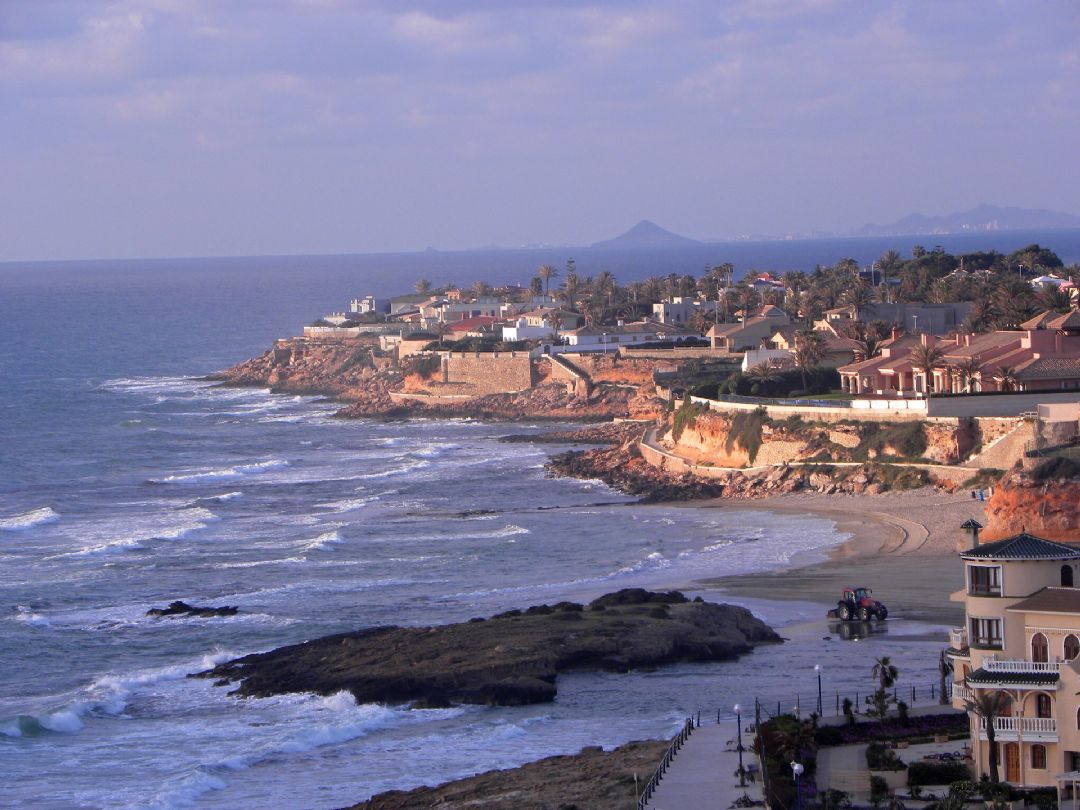
Torrevieja’s hidden secrets
7/26/2019
Torrevieja’s hidden secrets The Costa Blanca has always been a popular choice for buying a holiday home or a place to retire to in Spain. It has a well-established expat community with all of the home comforts of your native country blended together with the benefits of living in Spain, from excellent healthcare to good food and sunshine. With over 200 kilometres of sandy coastline, there is a beach for everyone’s taste and budget. Here is our guide to the smaller beaches and towns around Torrevieja. La Zenia With a tree lined beach and a newly built shopping centre, La Zenia has a varied international community. The beach at La Zenia is home to the European handball tournament. For shopping, eating and watching the world go by, the La Zenia Boulevard shopping centre has a long list of things to do. In total over 150 Spanish and international brands line its shopping streets, with names such as Zara, Desigual and Massimo Dutti available. With restaurants, a 5D cinema and social events such as wine tasting and Flamenco shows and a supermarket everything is literally in one place. Playa Flamenca From a big shopping centre to the more local market held at Playa Flamenca every Saturday, you can stock up on fruit, vegetables and gifts in a traditional Spanish setting. The three beaches of Cala Peñas, Cala Mosca and Cala Estaca at Playa Flamenca are quiet and unspoilt, with Cala Mosca and Cala Estaca being the most commercial. These beaches are lined by a promenade with views of the coastline and rocky headland. Cabo Roig Cabo Roig is a laid back place, ideal for those who want to combine a trip to the beach with easy access to golf courses. The old town is made up of traditional Spanish avenues lined with palm trees and gardens and views of the La Manga resort and the Mediterranean Sea. Cabo Roig has its own marina and the beach next to is blue flag certified. Restaurants here serve a mainly Mediterranean based menu, from fish to paella with some international influence including Indian, British and even an Australian themed pub. Daily flights from local airports The Costa Blanca is particularly easy to access from Northern European airports, with direct flights from small local airports available with low cost airlines, even throughout winter. A home here is the perfect escape from winter weather and the luxury of being able to stay in your own home for the period of time you choose, means you have even more opportunities to get to know the area. Offering excellent value for money in an established expat area, we recommend you get in touch now to book a viewing of your place on the Costa Blancan coast.
.jpg)
Get away from it all on the Costa Maresme
6/25/2019
If you are looking for a holiday home with access to a fantastic city but that offers you the chance to simply sit back and relax with a beautiful view when you're not taking in the sights in the city centre, then the Costa Maresme is the perfect choice for you. Located just north of Barcelona, it's a relaxing haven away from the hustle and bustle of Barcelona. Stretching from the north of Barcelona to Blanes, taking in Mataró, Arenys de Mar and Sant Pol de Mar. Easily accessible by car from both Barcelona and Girona airports, once you've arrived at your holiday home, we suggest you leave the car on the drive and head off to explore by train. The train from Barcelona follows the coastline for a significant part of the journey, promising fantastic views of the beaches and sea from your seat, with stops just a few kilometres apart. This was the first railway line to open on the Iberian Peninsula way back in 1848 when the rich people of Barcelona started to build houses on the Costa Maresme and their charming 19th century houses still host tourists today. The spa town of Caldes d’Estrac has a fantastic local spa that you simply must visit. Offering a wide range of treatments for medical conditions as well as those who simply want to be pampered, prices start at just €12. For art-lovers the Fundació Palau is the result of Josep Palau i Fabre's friendship with Pablo Picasso - he saved a wealth of drawings, notes and artwork by Picasso and it is now on display at the museum which bears his name. If you're a fan of markets the town of Arenys de Mar has a Saturday flea market with a plethora of treasures to look through. If you're looking for fresh food to take home to cook at your villa whilst staying near to Arenys de Mar, there is a daily local market held in a modernist building constructed between 1923 and 1929. Alternatively, head to San Pol de Mar, or indeed any of the small towns along the train route and enjoy tapas and a chilled beer or local wine with the scent of sea air and the sound of crashing waves against the sandy beaches as your backdrop. To search for a holiday home for sale on the Costa Maresme you can also use our search service to find the best home for you. Sources Theguardian.com Balnearicaldetes.cat/en/ Fundaciopalau.cat/ Catalunya.com

Why now is the time to buy your deam holiday home in Spain
5/16/2019
Investing in a new home in Spain with the view to developing it as a business opportunity in between your holidays there hasn’t looked so good since the financial crisis of 2008. Excellent return on investment With a potential return on investment of 11.2% given by the Spanish Central Bank in November 2018, investing in Spain now could be a wise choice for those who love the country, its food, culture and people, and of course those who want to see their money grow for them in the form of bricks and mortar. This expected return on investment is calculated based on a gross rental yield of 4.04% and a capital gain estimated at 7.16%, making it one of the best outlooks since 2008. The market has grown steadily since 2012 with a breakeven point in 2014 which has grown and grown to today’s investment opportunity. Real estate prices in Spain Spanish property prices remain low and in some places are still at levels lower than 2007. For those looking to buy a home for investment purposes or simply as a home away from home in the sunshine, Spain really does represent an excellent opportunity. The Spanish economy is on the up With unemployment falling from 26% to 15% and car purchases growing by 6.8% from 2017 to 2018, consumer confidence is high and it shows. GDP is expected to rise by 2.5% this year and the outlook for Spain according to their own Central Bank in a recent statement remains one of growth, until 2021 or beyond. Mortgage rates Mortgage rates, like much of Europe, remain at an ideal level for those looking to borrow at low interest rates, with the average rate hovering around 2%. Inflation is rising, however, and these interest rates may not remain low as the months go by. Getting a mortgage in Spain Our partners can advise on the house buying process in Spain and work with local providers to get the best mortgage for your needs. They can also advise on the Spanish property purchasing process, which protects both buyers and sellers and prevents gazumping which is allowed in the UK. Speak to one of our trusted agencies on the Costa del Sol, Costa Brava or Costa de la Luz amongst others for help with the purchase of your dream home in Spain. They can help you obtain a Spanish personal tax number, deal with notaries, banks and the local town hall, making the process straightforward for you.
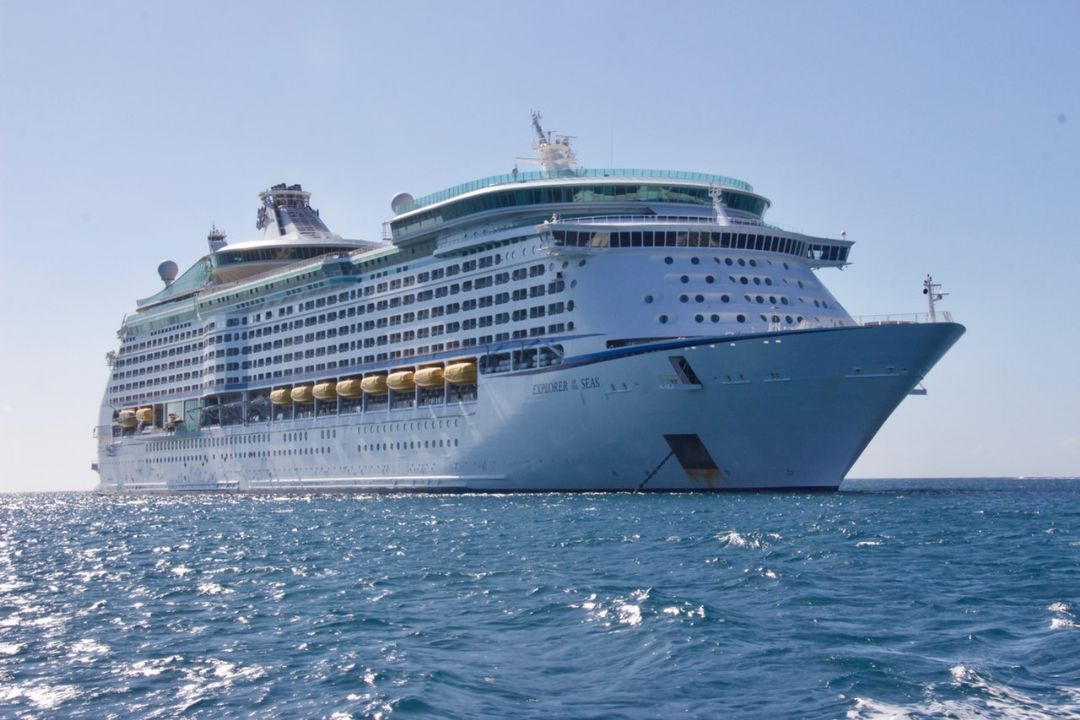
The top three Spanish cruise vacations
4/23/2019
Each year, more than two and a half million tourists decide to take a cruise along the Spanish coast and see the wonders that port cities such as Mallorca, Barcelona and Cadiz have to offer. Going on a voyage through the crystal clear waters of the Mediterranean allows you to experience the vastly different sights, tastes, and festivities of different regions in just a few days. Here are some of the top cruise lines offering tours of the Spanish coast. Windstar Cruises Spanish Serenade Traveling from Lisbon to Barcelona in just over a week with plenty of entertaining and safe activities onboard, the Windstar Spanish Serenade cruise stops at two Portuguese ports before moving onto the Spanish coast. Guests can see the world-famous Alcázar Palace in Seville and tour the Alhambra Palace in Granada as well as the Generalife Gardens, all UNESCO World Heritage Sites. The cruise also stops in Málaga, home of artist Pablo Picasso, the pristine beaches of Mallorca, and the bustling city of Barcelona where you can take in the works of architect Antoni Gaudi. The Windstar Spanish Symphony cruise also travels from Lisbon to Barcelona, giving guests a tour of the romantic beaches of Costa del Sol and the architecture of picturesque coastal “white villages”. You can also see more of Spain on the Island Gems of Spain and Portugal tour, the Star Collector cruises, and the Treasures of Southern Spain and Morocco. All cruises stop along major coastal cities, allowing guests to explore to their heart’s content. Norwegian Cruise Lines Spain Cruises Norwegian Cruise Lines offers both day cruises and longer itineraries. You can explore the Gothic plazas and wander the City of Arts and Sciences in Valencia, relax on the beaches of Mallorca, see the unique architecture of Malaga, or visit the breathtaking streets of Seville. Norwegian Cruise Lines also offers cruises around the Mediterranean and Barcelona, allowing you to see Spain and the neighboring countries of France and Italy. Royal Caribbean Cruises from Barcelona You can travel the coast of Spain, Portugal, and the Canary Islands with Royal Caribbean Cruises. Voyages around the Mediterranean and the Iberian peninsula bring guests in close contact with cities along the coast such as Barcelona. You can also relax and enjoy a transatlantic journey from Ft. Lauderdale, Florida to the beaches of Spain. Most Royal Caribbean cruises last between one and two weeks. Experiencing the Spanish coast on a cruise liner is one of the best ways to see all that the country has to offer. You can kick back and relax as you watch the scenery go by, or disembark at port cities to explore. Windstar Cruises, Norwegian Cruise Lines, and Royal Caribbean all offer a number of tour packages for individuals and families looking to experience Spain. Immovario provides the perfect platform to find your Spanish base before you embark on a cruise to remember. Why not check out the properties we have available today? Text by Ali Ayres Photo by Matthew Barra from Pexels
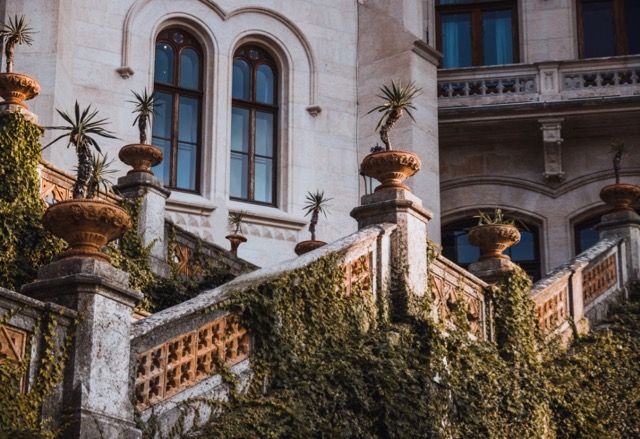
Maximise Your Earnings From Your Spanish Rental Property
3/19/2019
International tourism in Spain broke its record for the fifth year in a row with a record 82 million tourist visiting the country last year. The combination of visitor numbers and expats means that there is a huge choice in rental properties for the foreigner wanting to spend time in the country. If you’re dreaming of buying a Spanish property to rent out there are important factors to consider to maximise your earning potential. Letting out a home, either for a few weeks or for a long term let, can recoup the running costs involved and give you the extra cash you need so here's some thoughts to help you along the way. Modern Vs Traditional While owning an authentic villa in the olive groves is a Spanish dream come true for some, the reality can equalise to a great deal of hard work if it hasn’t been renovated already. Consider how much you would need to spend in order to update it such as doing the necessary checks for a renovation project it, and how that compares to its market value. Alternatively, choosing a property that is accessible for everyone is likely to broaden the possibilities of future rentals, particularly in Spain where the percentage of retired people is quite high. Check out smart technology, door widths and other home adaptations to get the most from your property. Choose location While there are many factors to consider when buying a rental property in Spain, choosing the location should be one of your main considerations. Whether you’re down on the Costa del Sol or in the Ramblas in Barcelona, having close proximity to at least one airport with frequent flights is a necessity. You’ll also need to think of nearby attractions and amenities such as beaches, shops, bars and restaurants, and include theme or water parks on your list if you want to appeal to families. The little extras With so much competition on the current market, ensuring you have the little extras will increase the possibilities of more frequent rentals for people wanting to live in Spain. Having a swimming pool, for example, is likely to be much easier to rent out rather than a property without them, even it its a shared pool in an apartment. Selling the property’s attributes such as having a local golf course nearby could encourage people to chose your property over someone else's. Whatever type of rental property you buy in Spain, the best advice is to do indepth research first so you’re aware of all the pros and cons to make an informed decision and maximise the rental possibilities of the property. Author: Ali Ayres Picture: David Bartus
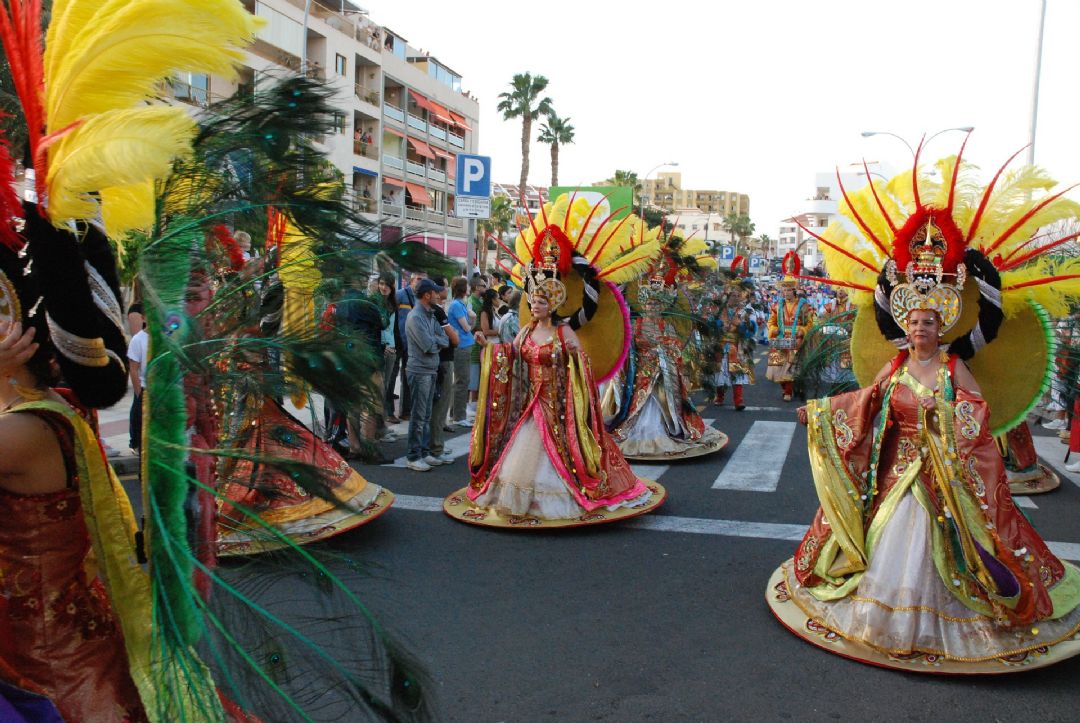
A carnival to rival Rio
2/22/2019
They say that the carnival in Santa Cruz de Tenerife is the closest you'll get in Europe to carnival on the scale and style of the one in Rio de Janeiro, Brazil. Taking place over fifteen days, it's a chance to dance, party and be wowed by the extravagant, flamboyant costumes the carnival goers wear. The Carnival Queen gala The Carnival Queen is chosen on the first Wednesday of the two weeks of Carnival. A gala takes place in which the contestants for the crown parade in their carnival costumes along a 1,200 metre stage. With a queen chosen, the carnival begins on the Friday of that week and is a three day fiesta of fun, glamour, colour, music and dance. Local groups sing both social and political songs to entertain the crowd and send the dancers on their merry way through the parade. El Coso After this three day party comes El Coso, the climax on Carnival Tuesday, of all of the partying. with parades lasting hours taking place along the seafront of Santa Cruz de Tenerife, the Carnival Queen, floats and dancers put on a spectacular show. Ash Wednesday On the second Wednesday of Carnival, Ash Wednesday, the day after El Coso, the Burial of the Sardine event takes place. A sardine puppet is paraded through the street with widows and mourners crying as it is led to its "burial" where it is set on fire, representing the start of Lent, or Cuaresma in Spanish. Piñata chica Carnival on the island of Tenerife does actually have one more event at the weekend following Ash Wednesday. The celebration of the Piñata chica has more shows, dances and parades and is held in the town of Tacaronte. This carnival has an antique car show and more activities aimed at children.With its own carnival queen gala, parades and sardine burial, the Piñata Chica carnival is the perfect excuse to party some more! Tenerife is an excellent choice of location to buy a holiday home or a place to retire to in the sun. With excellent year-round sunshine, it is within a three to four hour plane ride of Northern European airports and is an ideal choice for almost guaranteed sunshine in the winter, and sunbathing in the summer.
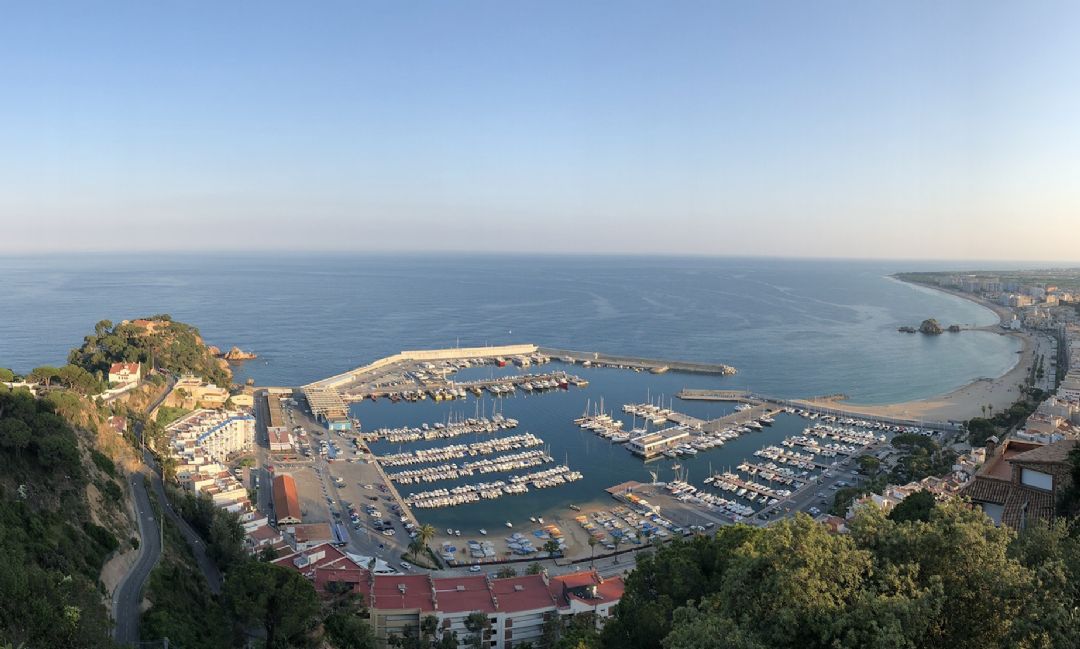
Gastronomic delights in Blanes
2/1/2019
Enjoying fresh local food when on holiday is one of reasons why people choose Spain as a place to buy a holiday home or to take a holiday with family or friends. The popular town of Blanes, located on the Costa Brava has everything you need foodwise to savour Spanish food at its best - whether you are eating at home or enjoying a meal and drinks at a local restaurant. Local fruit and fish markets Blanes' fresh fruit market is held every day at the Passeig de Dintre with local producers selling just-picked fruit and vegetables. They don't get much fresher and more colourful than this! Locals refer to the markets with the phrase "Anem a plaça”, or come to the square, as it was how the market held in Plaça dels Dies Feiners was known years ago. Fresh fish, literally just off the boat can also be bought every afternoon during the week, at the Lonja in front of the harbour or at the recently renovated Plaça dels Dies Feiners(Dies Feiners Square). The weekly indoor market for shoes, gifts and food can be found at Carrer Mas Enlaire, and is held on Monday from 8 a.m to 2 p.m. Local beer and wine producers Local breweries and wineries can also be found in and around Blanes, with local bars serving the best local beers from Marina and Popaire and Laviret and Ses Vernes Cavas or Coral Marine Sea Drink sparkling wine which is aged under the sea. Dine out When cooking for yourself really isn't on the agenda for the evening and you simply want to be spoilt at the table, the harbour area is one of the best places to head to for local food. Seafood is one of the best choices thanks to the town's own fishing fleet bringing in the best fresh fish every day, and it can be found in a range of dishes, from traditional to modern, local to international. Gamba de Blanes, or Blanes prawns are a must-try dish. Enjoy with a chilled white wine and good company. Getting to Blanes Blanes is easily accessible from Barcelona and Girona airports which have excellent connections to European and international airports. Within Europe many low-cost airlines operate to both of these airports, so if your holiday home is in Blanes, you could be as little as two hours away from the sunshine - perfect for a last-minute getaway! For details of properties currently available click on this link: Property for sale Blanes Sources: Blanescostabrava.cat/en/eating-in-blanes/
